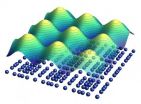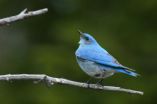Photographic cholesterol test
A noninvasive approach to total cholesterol determination
2012-08-17
(Press-News.org) Researchers in India have developed a total cholesterol test that uses a digital camera to take a snapshot of the back of the patient's hand rather than a blood sample. The image obtained is cropped and compared with images in a database for known cholesterol levels.
Writing in the International Journal of Medical Engineering and Informatics, N.R. Shanker of the Sree Sastha Institute of Engineering and Technology and colleagues describe how they have developed a non-invasive way to test cholesterol levels in patients at increased risk of heart disease. Their approach is based on the creation of a large database of cholesterol levels recorded using standard blood tests and linked to a standardized photograph of the hand for each patient; cholesterol is concentrated in the creases of one's fingers. They developed an image-processing computer program that compares the image from a new patient with the thousands of entries in the database and matches it to a specific cholesterol reading.
Measuring the amount and type of cholesterol circulating in the blood is an important risk factor in cardiovascular disease. Excess cholesterol not used by the body in making hormones and building cells is laid down on the inner wall of arteries as a waxy plaque, which can reduce the normal flow of blood potentially causing heart problems and increasing the risk of cerebral stroke. Total cholesterol is a useful early indicator, although more detailed testing that distinguishes between the HDL high-density lipoprotein) and LDL (low-density lipoprotein) and triglycerides are needed for a more accurate health assessment of patients found to have high total cholesterol. It is LDL, so-called "bad" cholesterol that contributes to the formation of arterial plaques, atherosclerosis. The presence of different total levels of cholesterol can be revealed through image analysis of the skin.
A non-invasive and inexpensive method for cholesterol screening would allow this risk factor be determined in much larger patient populations without the need for costly and inconvenient blood tests. The team will also soon publish details of the extension of this work to classifying cholesterol type using their approach.
INFORMATION: "Non-invasive method of detection of cholesterol using image processing" in Int. J. Medical Engineering and Informatics, 2012, 4, 223-230
END
ELSE PRESS RELEASES FROM THIS DATE:
2012-08-17
TORONTO, Aug. 17, 2012--When members of the public participate in research studies, they are often given incentives – such as cash or gift cards for food – as compensation or reimbursement for their time and effort. Not so for Canada's prison population. A new analysis shows that there is inconsistency in how and when incentives are used for research participants under criminal justice supervision.
Of the provinces, territories and federal government, only two jurisdictions have written policy around the use of research incentives, according to a national study led by ...
2012-08-17
Whether a material conducts electricity without losses is not least a question of the right temperature. In future it may be possible to make a more reliable prediction for high-temperature superconductors. These materials lose their resistance if they are cooled with liquid nitrogen, which is relatively easy to handle. An international team, in which physicists of the Max Planck Institute for Solid State Research in Stuttgart played a crucial role, has now discovered that this form of superconductivity competes with charge density waves, i.e. with a periodically fluctuating ...
2012-08-17
VIDEO:
A Spanish researcher has proposed human, agricultural and livestock waste, such as urine, as a way to absorb CO2.
Click here for more information.
The ocean, the ground, rocks and trees act as carbon drains but are far from places where greenhouses gases are concentrated, especially CO2. A Spanish researcher has proposed human, agricultural and livestock waste, such as urine, as a way to absorb this gas.
Absorbing the large quantities of carbon dioxide and other greenhouse ...
2012-08-17
EAST LANSING, Mich. --- Two new species of owls have been discovered in the Philippines, and a Michigan State University researcher played a key role in confirming their existence.
The discovery, which is featured in the current issue of Forktail, the Journal of Asian Ornithology, took years to confirm, but it was well worth the effort, said the paper's lead author Pam Rasmussen, MSU assistant professor of zoology and assistant curator of mammalogy and ornithology at the MSU Museum.
"More than 15 years ago, we realized that new subspecies of Ninox hawk-owls existed ...
2012-08-17
CAMBRIDGE, MA -- A penny-sized rocket thruster may soon power the smallest satellites in space.
The device, designed by Paulo Lozano, an associate professor of aeronautics and astronautics at MIT, bears little resemblance to today's bulky satellite engines, which are laden with valves, pipes and heavy propellant tanks. Instead, Lozano's design is a flat, compact square — much like a computer chip — covered with 500 microscopic tips that, when stimulated with voltage, emit tiny beams of ions. Together, the array of spiky tips creates a small puff of charged particles that ...
2012-08-17
Although George Church's next book doesn't hit the shelves until Oct. 2, it has already passed an enviable benchmark: 70 billion copies—roughly triple the sum of the top 100 books of all time.
And they fit on your thumbnail.
That's because Church, the Robert Winthrop Professor of Genetics at Harvard Medical School and a founding core faculty member of the Wyss Institute for Biomedical Engineering at Harvard University, and his team encoded the book, Regenesis: How Synthetic Biology Will Reinvent Nature and Ourselves, in DNA, which they then read and copied.
Biology's ...
2012-08-17
NASA's Terra satellite passed over Tropical Storm Gordon as it continues to spin up in the North central Atlantic Ocean, and revealed the storm has become less symmetric, indicating it is being battered by wind shear.
When Terra passed over Gordon on August 16, 2012 at 10:25 a.m. EDT (1425 UTC) the Moderate Resolution Imaging Spectroradiometer (MODIS) instrument captured a visible image of the storm. The image showed that the bulk of Gordon's clouds were pushed to the north and northeast as a result of southwesterly wind shear. The MODIS image showed what appeared to ...
2012-08-17
Berkeley — Two new studies by scientists at the University of California, Berkeley, provide a clearer picture of why some species move in response to climate change, and where they go.
One study, published online Monday, Aug. 6, in the journal Global Change Biology, finds that changes in precipitation have been underappreciated as a factor in driving bird species out of their normal range. In the other study, published today (Wednesday, Aug. 15) in the journal Proceedings of the Royal Society B, researchers found a sharp decrease in range for the Belding's ground squirrel, ...
2012-08-17
Highlights
Vancomycin was the most commonly prescribed antibiotic in dialysis patients for treating certain bloodstream infections, but cefazolin was 38% better than vancomycin at preventing hospitalizations and deaths from these infections.
Cefazolin was also 48% better at preventing sepsis.
Hundreds of thousands of Americans develop bloodstream infections every year.
Washington, DC (August 16, 2012) — The antibiotic most commonly prescribed to treat bloodstream infections in dialysis patients may not always be the best choice, according to a study appearing ...
2012-08-17
Highlights
The blood levels of certain abnormal proteins and the antibodies that attack them rise according to the severity of one of the most common diseases of the kidney.
The findings may help in the diagnosis and management of the disease, called IgA nephropathy.
IgA nephropathy can lead to high blood pressure, swelling and, in some cases, kidney failure.
Washington, DC (August 16, 2012) — Increasing blood levels of particular proteins may act as warning signs for patients with one of the most common diseases of the kidney, according to a study appearing ...
LAST 30 PRESS RELEASES:
[Press-News.org] Photographic cholesterol test
A noninvasive approach to total cholesterol determination



